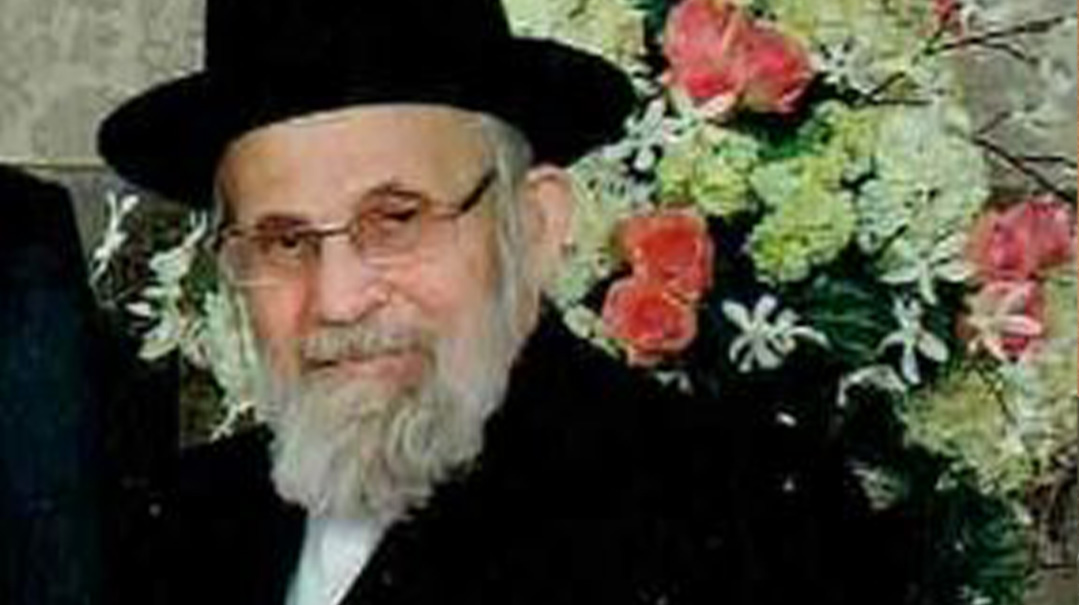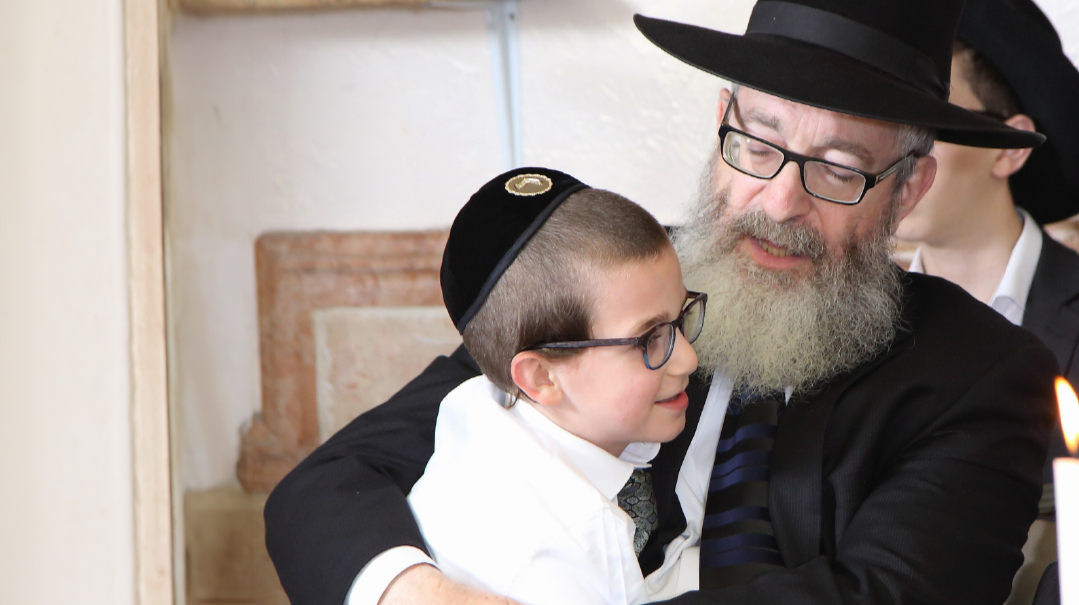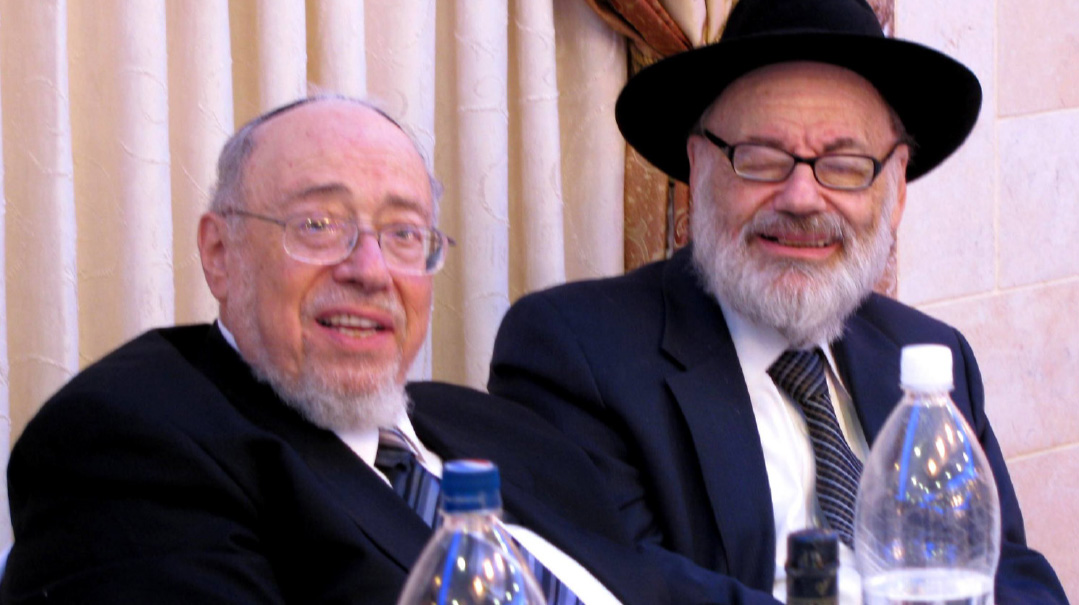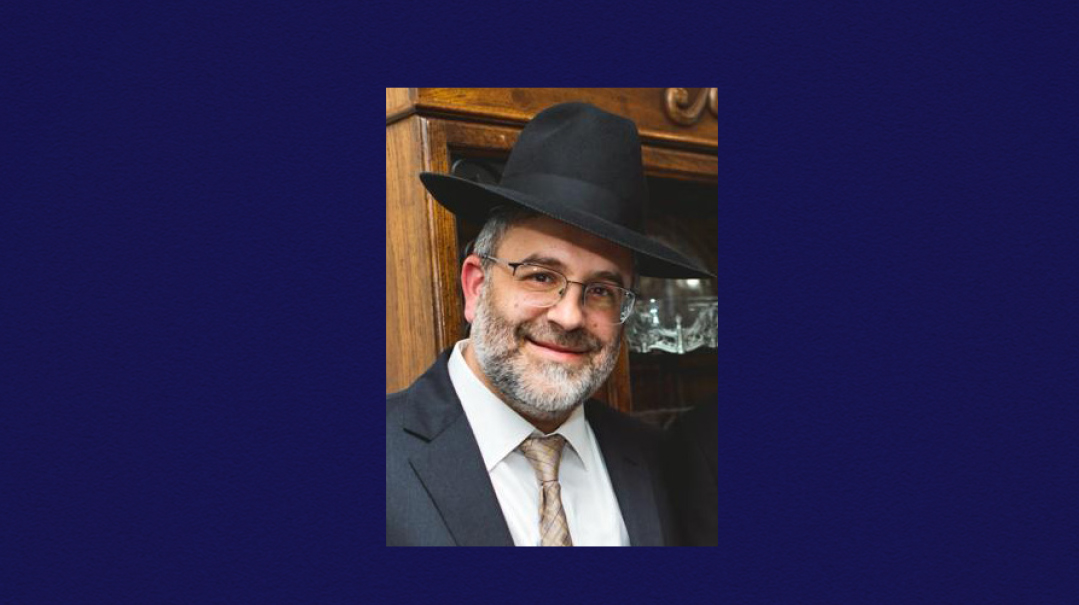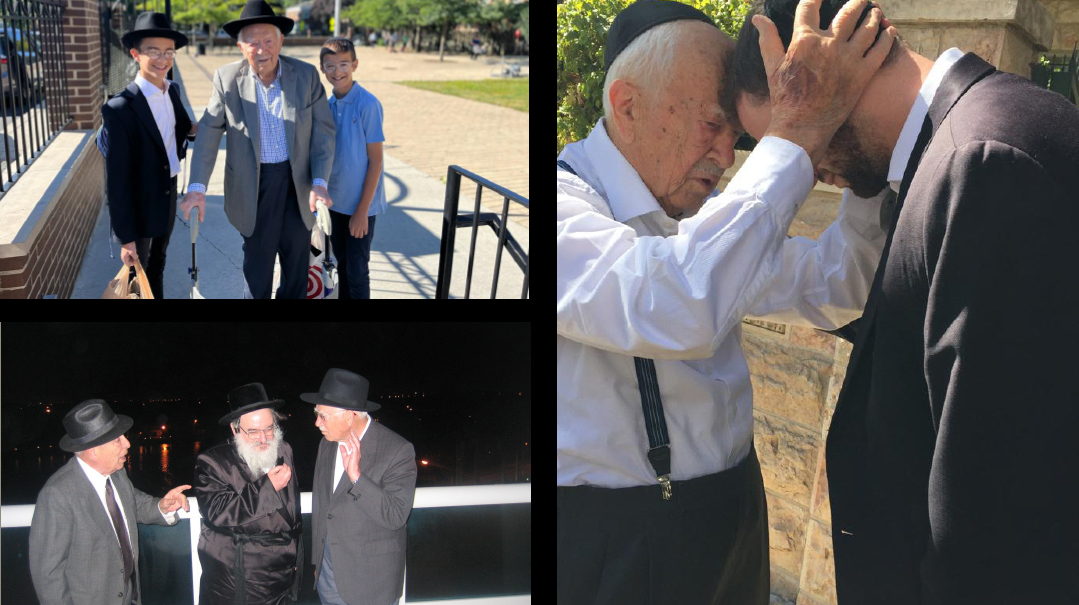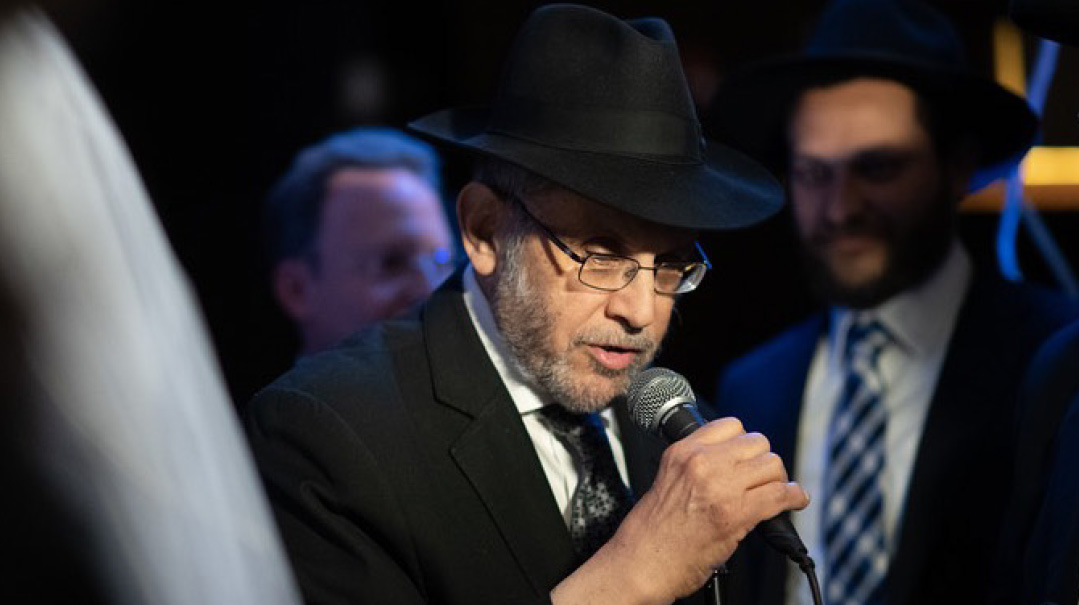Talk to Your Soul

Rav Shlomo Hoffman spent the better part of a century uncovering the layers of the neshamah and left his tools as a gift to the world
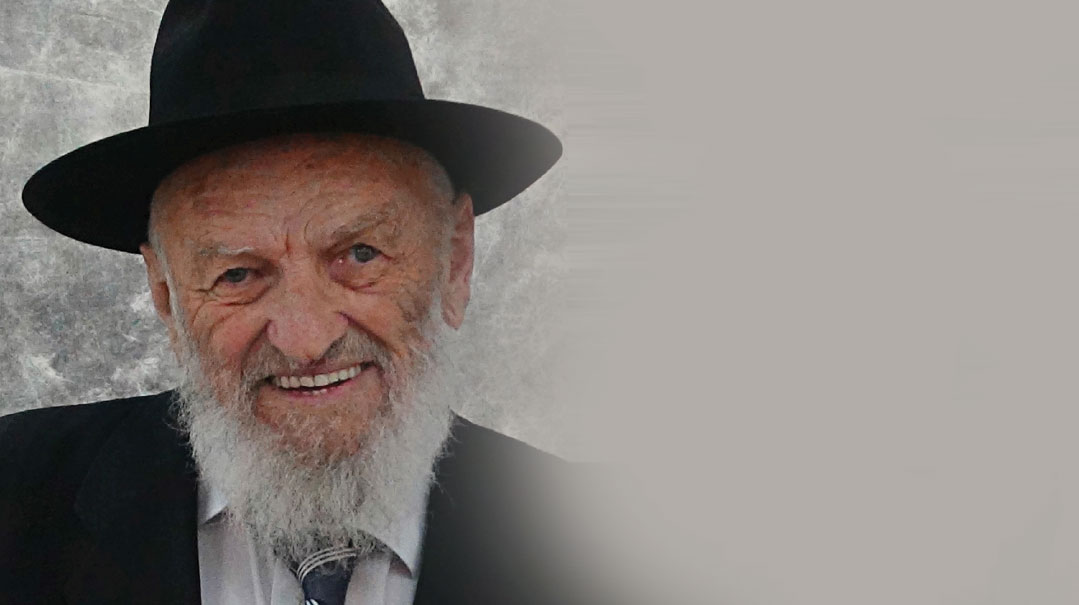
One of the most remarkable mussar seforim to emerge in recent years is a compilation of the profound insights and wisdom of Rav Shlomo Hoffman, a venerated talmid chacham with such deep perception into the complexities of the human condition that Rav Aharon Leib Steinman would send yeshivah mashgichim to him for training, and who, back in the 1950s, was even appointed by the secular courts to use his skills in rehabilitating hardened criminals.
When a several-hundred page book of his solutions to deep emotional dilemmas and trauma was published in 2016, Sichos Im HaRav Shlomo Hoffman — compiled from conversations with his talmid Rav Meir Simcha Stein, who edited the digest — flew off the shelves and has sold over 20,000 copies to date. Now, English-language readers can use Rav Hoffman’s practical tools to maximize their own kochos hanefesh with the first volume of the series, Secrets of the Soul (Feldheim), translated into English.
By the time he passed away in 2013 at age 91, Rav Hoffman, who as a bochur had learned in the Chevron yeshivah in pre-state Palestine and became a close talmid of Rav Yitzchak Eizik Sher, had left his influence on generations of students and mechanchim.
But how does a gadol become a psychiatrist and healer of souls without any formal training, using only the blueprint of the holy seforim and his own finely honed human insight?
Rav Hoffman would brush off the compliments regarding his own prowess, attributing his skill in dissecting the inner workings of the mind and soul to the vast storehouse of Torah wisdom where, he would say, all the answers are found. One secret he shared later in life was a lesson he’d learned early on from his rabbanim: They never put the blame on the student; there was never accusation, only a personal reckoning. “It was only about ‘what could I have done better that I didn’t do enough of?’ ”
Rav Hoffman once told of how he, as a young chassan, had committed to Rav Yehoshua Yagel that he would serve as a counselor and meishiv in the Midrashiah in Pardes Chana, which meant leaving the Chevron yeshivah. After his wedding though, Chevron rosh yeshivah Rav Yechzkel Sarna tried to persuade him to stay in the yeshivah’s kollel. The young avreich explained that he’d made a previous commitment to Rav Yagel, who was known to pay generously. Rav Sarna promised to pay the same sum that Rav Yagel was offering, which was equal to about six months of kollel stipends, but Shlomo Hoffman remained committed to his word.
Rav Sarna, brokenhearted, took it as his own failing, although he could have held a grudge or pointed a finger. “Had I worried about you more, then you wouldn’t leave us. I should have been more devoted,” he said tearfully to his prized talmid.
Into Balance
Rav Shlomo Hoffman was born in Selish, Czechoslovakia in 1922, and on the advice and encouragement of the Chakal Yitzchak of Spinka, when he was 12, his family moved to Eretz Yisrael.
The family settled in the port city of Haifa, but even across the Mediterranean, they maintained their close bond with the Spinka Rebbe, who instructed 15-year-old Shlomo to travel to Jerusalem and learn in the yeshivah ketanah of Yeshivas Chevron. The following year, 1938, when he was 16, he joined the yeshivah gedolah and would eventually be taken under the wing of Rav Yitzchak Eizik Sher and thus become heir to the Slabodka mussar traditions. Young Shlomo had already displayed certain habits and sensitivities that would make him a prime candidate.
At the beginning of that zeman, he had his first audience with the mashgiach, Rav Meir Chodosh. “Know the difference between yeshivah ketanah and yeshivah gedolah,” Rav Meir told him. “In yeshivah ketanah, when no one came to you with complaints, you knew you were fine. Here, it’s the opposite. We come with complaints only to those who are good, who can benefit from the demands made on him.”
Shlomo listened — and never stopped listening. In time, Rav Meir dubbed him “di beste herer,” the best listener in the yeshivah. (Some 50 years later, the elderly Rav Meir was sitting in the succah of his son-in-law, Rav Baruch Mordechai Ezrachi, with Rav Sholmo at his side. He tried to remember something that he had said in shmuess in those early days, and on the spot, Rav Shlomo repeated the vaad to him verbatim.)
Indeed, Rav Meir deemed him a bochur of whom demands should be made. First it was the short pants that Shlomo wore, even on Shabbos. “Take money from the office and buy yourself pants and a suit,” he told the bochur. Shlomo replied that he would get new clothes when he’d have the money, but he didn’t want to take funds from the yeshivah.
But one day in Elul, he was left with no choice. A pair of prominent bochurim from the yeshivah told the younger talmid that he was being taken immediately to a tailor for measurements. On Rosh Hashanah night, wearing his new clothes, he stood in line to say gut yahr to Rosh Yeshivah Rav Yechezkel Sarna, who stopped him — and the whole line — looked at his clothes, and declared: “Dos is kavod haTorah!” This was somewhat traumatic for the very bashful teenager, but as he said later, “It was a shiur klali in the importance of kavod haTorah. That was Slabodka, and these were my mental health caregivers.”
As a bochur, Reb Shlomo had many practices that he took upon himself. One of them was getting up for vasikin, after which he learned diligently. One day after several years of this, he raised his eyes from the shtender and discovered the Mashgiach standing in front of him with tallis and tefillin. “Since entering the yeshivah, your solemnity and sadness have grown stronger,” Reb Meir snapped. “For one it takes half a year, for another a year. I’m waiting three and a half years for it to pass with you already. When will you overcome it and stop with the narishkeit?”
Shlomo was very hurt. He thought he was doing something tremendous, dedicating himself to shteigen, and in one fell swoop it was deemed “narishkeit.” Years later, he explained that with one word, Reb Meir healed him and got him into balance.
Hear the Tears
At the time, the Chevron students would rent rooms from families in the area, and Shlomo Hoffman found a room in the home of the Goldman family — the residence of Rebbe Shlomke of Zvehil. For two years, the litvish bochur lived in the house and learned from the Rebbe’s ways. There was the neighborhood child, for example, whom the Rebbe used to skip over when distributing tzedakah on Friday. When Shlomo asked the Rebbe why, he replied, in his compassion, that he saw that this child was gifted with the middah of giving, and the tzedakah would corrupt him and turn him into a taker, which would ruin his life.
One day, the Rebbe told Shlomo, “When you come home this afternoon, I won’t be here, but go into my room and read the kvittlach on my desk.” Shlomo did as the Rebbe instructed, but by the fourth kvittel, he broke. The tremendous suffering and tzaros that were written there were heartrending. When the Rebbe returned a short time later, he asked why Shlomo wasn’t reading the kvittlach as he had asked. “Each one is harder than the next, I can’t take it,” he replied. The Zvehiller Rebbe looked at him sternly and said, “Only I have to suffer the tzaros of Am Yisrael? You also need to hear and share their pain.”
This turned out to be the Rebbe’s futuristic brachah, granting Reb Shlomo the strength and wisdom he would later use to listen and treat the troubles of Am Yisrael.
Another pivotal moment occurred in Elul of 1941, after Rav Yitzchak Eizik Sher’s Shabbos vaad.
Reb Eizik was the revered Slabodka scholar, son-in-law of the Alter, Rav Nosson Tzvi Finkel. He had endured World War I with the yeshivah and had become one of its roshei yeshivah, staying behind in Lithuania after a branch of the yeshivah moved to Eretz Yisrael. When World War II broke out, he was in Switzerland for surgery on his leg, and unable to return to Lithuania, he and his rebbetzin traveled to Eretz Yisrael instead — and were spared while the Lithuanian Torah world was slaughtered.
In Eretz Yisrael, he rented an apartment near the Chevron yeshivah in Jerusalem’s Geula neighborhood, where it had moved after the riots of 1929. Rav Eizik didn’t have an official job in the yeshivah, but he was the venerated rosh yeshivah from Lithuania and Rav Sarna honored him with, among other duties, giving a regular Shabbos shmuess. Many talmidim from Chevron, Eitz Chaim, Mercaz Harav, and other yeshivos would take the opportunity to come to his apartment each Shabbos afternoon to hear the shmuess.
One of them was Shlomo Hoffman, who was in the year of aveilus for the passing of his father.
That Shabbos, after the shmuess, the crowd davened Minchah in Reb Eizik’s apartment, and Shlomo recited Kaddish Yasom. Rav Eizik raised his eyes.
A few moments later, when the vaad ended and Rav Eizik asked him to wait, another bochur, Reb Gedaliah Eiseman, Shlomo’s chavrusa — who would later become mashgiach in Yeshivas Kol Torah — also tensed. He waited on the side to see what would happen.
“Who are you saying Kaddish for?” Rav Eizik inquired. The bochur said that it was for his father. “And what about your mother?” He related that she was alive and lived in Haifa.
The bochur did not know how to handle the direct encounter with such a respected figure, and Reb Gedaliah — knowing how shy young Shlomo was — mentioned this to Reb Eizik.
“He’s not shy,” Rav Eizik declared firmly to Reb Gedaliah. “If he would be shy, how come he’s not shy to be shy?” (This comment, with its depth, captivated the heart of the bochur, who would analyze it for many years to come.)
“Come to me during the week,” Reb Eizik concluded the conversation. Shlomo though, shy as he was, made himself scarce.
On Motzaei Yom Kippur, as Shlomo was getting ready to travel home to Haifa for bein hazmanim, a bochur named Hirsh Paley (who later became the mashgiach) gave him this message: “Don’t dare go home before you go to Reb Eizik.”
This time, he went. Reb Eizik began to speak to him — and the meeting lasted four hours. At the end, he informed Shlomo unequivocally that “the first door you’ll knock on when you return to Yerushalayim will be this one.”
Rav Eizik understood that Shlomo was going home to his widowed mother. The Rav asked when he had last seen her (“Pesach”) and what he planned to tell her (“hello”). When he heard these laconic answers, he chided the young talmid: “She has no husband and she hasn’t seen you in half a year! She misses you. She will kiss your forehead and shed a tear.”
Shlomo lost patience.
“Well, women cry easily, veibesher treren [female tears].”
Reb Eizik’s face grew serious. “Veibesher treren? Give me a Chumash Shemos. Was your tefillah yesterday accepted?”
The bochur replied that he did not know. “And mine? Was it accepted?” The bochur replied that he was sure that it was.
The Rosh Yehsivah’s voice rose. “ ‘Yasom v’almana lo sa’anun… because if he screams to Me I will listen to his scream.’ Do you hear? It doesn’t say that HaKadosh Baruch Hu hears the tefillah of the Slabodker Rosh Yeshivah, but the almanah who cries — that will be heard. And you are scornful about it?”
The bochur realized what had happened and fell silent. Reb Eizik began to instruct him on what to say to his mother, and Shlomo pledged with a handshake not to skip a single word.
“Hello, Mother. How are you? How do you feel?” (Here, she would get emotional and would kiss his forehead and cry.) “I’ve brought you personal regards from the rosh yeshivah of Slabodka, Rav Eizik Sher. He asked me to tell you that he is very pleased with me and that I learned well all summer, with hasmadah.”
She didn’t quite grasp who Reb Eizik was and what Slabodka was, but the next day, after the meal, Shlomo went for a walk with her when they ran into the chief rabbi of Haifa, Rav Baruch Marcus, a talmid of the Alter of Kelm. When he saw them, he began to speak excitedly: “I don’t know what zechus you have, but of the tens of thousands of residents of Haifa, there isn’t a single bochur who leaves his mother to learn in Yerushalayim.”
She listened and replied, “Honored Rav, Rav Eizik Sher, the rosh yeshivah of Slabodka, sent me personal regards and said that he really is learning well.”
The message had been absorbed, and had brought his widowed mother much joy.
From that moment on, a strong bond was forged. Each Monday, the young talmid and the great rav met for several hours, discussing avodas Hashem or matters in learning. In time, Shlomo was granted entry to Rav Eizik’s senior vaad of “klugers” despite his young age. Rav Eizik taught his protégé to pay attention to the emotions of his mother and of others, to relate to them and embrace them.
Encounter the Nefesh
The bochur who became the apple of Reb Eizik’s eye delved into his learning, and it was specifically then that Reb Eizik started talking to him about the yetzer hara. The young man was quite hurt.
He was a ben aliyah — why did the Rav think he had a yetzer hara?
Reb Eizik’s method was to foster a keen self-awareness. One should be aware of his traits, his yetzer, and know his middos well. That was the only way he could rectify his ways. The fact that a bochur became offended by talking of the yetzer hara indicated that he was not as self-aware as Reb Eizik wanted him to be.
One day, someone approached Shlomo Hoffman and informed him that “Reb Eizik said to tell you that he set up a meeting for you in his house.”
Shlomo wasn’t sure what kind of a meeting it was — a shidduch? — and so he put on his suit and walked over to Reb Eizik’s home.
No one was waiting there.
“Which meeting did the Rosh Yeshivah invite me to?” he asked hesitantly.
“I set you up a meeting with… the yetzer hara.”
The boy was stunned.
“The yetzer hara? I learn everything that the Rosh Yeshivah told me to learn. So what is the problem with me?” (This learning regimen included five hours of iyun each day, and 40 dapim of Gemara bekiyus each week.)
Reb Eizik looked at the offended boy and reminded him that he’d learned Maseches Succah in the summer: “On daf 56 it says that one who is ‘gadol,’ who is greater than his friend, his yetzer is greater too. This means that I have a greater yetzer hara than you do. So why are you offended by the fact that I say that you have a yetzer hara? My yetzer is bigger.”
He asked his talmid, “Does HaKadosh Baruch Hu want you to be a person or an angel? The answer is, not an angel, but a person with inclinations who knows how to cope with them. If so, what point is there in denying the yetzer hara’s existence and pretending to be an angel?” Rav Eizik tried to soften the hurt by sharing his own challenges and battles with his yetzer. He shared personal experiences and bared his soul’s deep thoughts in order to illustrate how normal and natural the yetzer is.
The most important thing that Rav Eizik taught over and over again was: Don’t be afraid of your yetzer hara. Avoid all panic on the subject, he’d say, but be aware. The more you are familiar with the yetzer and what stimulates it, the better you’ll know what to be careful about and what you’re facing.
Fast-forward a decade, to the morning of Erev Yom Kippur, 1951. Rav Shlomo and Rebbetzin Shoshana were living in Bat Yam at the time, parents of a baby and a toddler. When Rav Shlomo entered the beis medrash of the Slabodka yeshivah — which had been reestablished in Bnei Brak by Rav Yitzchak Eizik Sher in 1947, at the behest of the Chazon Ish — Reb Eizik saw him and chided, “What are you doing here?” Rav Shlomo replied that he had asked his wife permission to be in the yeshivah in Bnei Brak with his rebbi for Yom Kippur, and she granted it.
“Is that called asking permission?” Reb Eizik replied sharply. “Every good wife will agree to have her husband travel for Yom Kippur to a place that is mechazek him. But it is not real acquiescence. You should suggest to your wife that you will remain home in Bat Yam for Yom Kippur and you’ll daven early. After davening you’ll watch the children so that she can go daven Mussaf at a later minyan. Only if you suggest that, and she still asks you to go, then you can know that it is what she really wants.”
He forbade Rav Hoffman to remain even one moment longer and sent him home to apologize, to ask mechilah for not taking her real will into consideration.
Not surprisingly, Rebbetzin Shoshana sent her husband right back to the yeshivah.
It was the last personal encounter between Rav Shlomo and Reb Eizik, his rebbi muvhak. A few months later, the Rosh Yeshivah passed away. It was a last will and testament in chinuch that he taught Reb Shlomo — to be aware and considerate of others, and in that way, to truly love them.
No Experts Here
Who needs Freud when you have the Rambam and the Vilna Gaon? Why rely on constantly changing psychology theories, if Rav Yisrael Salanter has already broken down the secrets of the soul? Complex cases were brought before Rav Shlomo Hoffman; he opened seforim, and with unmatched skill, found the solutions. Gedolei Yisrael sat with him for hours and presented him with many problems that stumped them. But they weren’t the only ones: As his name spread as an address for people in dire straits, mental health professionals sought his input as well. In fact, he became one of the founders of Israel’s Probation Service, which evaluates criminals and works to rehabilitate them.
Probation officers today require extensive training in social work, evaluation, psychology, and various therapies. But at the time of the founding of the state, positions had to be filled, and there wasn’t much time for training, or vetting. That’s how a door opened to people who never would have normally made it into certain fields — and Rav Shlomo Hoffman was one of them.
When the Prisons Service publicized an ad looking for candidates to set up a probation service, Rav Shlomo Hoffman sent in an application. “I have no experience in working with criminals,” he wrote. He’d been on the staff at the Midrashia in Pardes Chana though, where he’d become a master at working with all types of bochurim and dealing with their issues. He admitted that he had no experience in criminal rehab, but he clarified that “my friends recommend me for this work, because of my experience in Youth Aliya institutions.”
It was a long shot, and Rav Hoffman didn’t even think he’d make it to a preliminary interview. But in fact, he was summoned.
“You’re a master at working with people,” said Dr. Peled, a Freudian psychologist and head of the Health Ministry’s mental health department, who was interviewing him for the Prisons Service position. When Reb Shlomo wondered aloud why he had been preferred over so many others, Peled picked up a stack of papers and said, “See these applications? They all said that they’re experts in working with criminals. You’re the only one who wrote that you don’t know how to do it. You know, in science there is not yet enough information about how to deal with criminals. So if someone writes that he’s already an expert, I’m not interested in him.”
Rav Hoffman eventually became director of Israel’s Probation Service. He achieved all this with only a yeshivah education, and no real degree. Indeed, he was not a licensed criminologist, but the entire Toras hamussar, especially what he had learned from Reb Eizik, contained more practical knowledge than any degree. He once said during a discussion with colleagues about studying a certain methodology, “The evil inclination is not a Freudian invention. It is a clear pasuk in the Torah: ‘Ki yetzer lev ha’adam ra mi’neurav, a person’s inclination is bad from his youth.’ My rebbeim taught me to recognize the yetzarim, be aware of them, expose their hidden strengths, and then deal with them.”
That a yeshivah-educated avreich was serving in a senior position heading the Probation Service in Israel drew plenty of fire. The secular media claimed that it was impossible that someone who observed Torah and mitzvos could make the right judgment call, and that he was a danger to society because he was drastically reducing prison sentences.
But Rav Hoffman wasn’t releasing monsters back onto the streets. He sat with the prisoners and listened to them, trying to break through to their underlying emotions. Some people, he explained, recoil from criminals, because they make a mental distinction that “I am a person and he, who did such a thing, is subhuman.” But that, he said, is actually running away from themselves. HaKadosh Baruch Hu gave the path of teshuvah for all, and teshuvah, he proved time and again, is the most effective tool in bringing people back to the straight path. Prison, he would often tell the judges, is not only about punishment, but also to facilitate correction. He would sometimes appear in court and recommend to judges not to punish a certain felon with a prison sentence, but would recommend some beneficial alternative.
When he served as director of the Service, he would often appear before the High Court during the appeals process. “He spoke with conviction, and it was clear that he believed his own words, which is why the judges trusted him,” explained Professor Shlomo Giora Shoham, a senior professor of criminology who worked extensively with Rabbi Hoffman. “They believed him because he believed in the absolute truth of his own word.”
At the time, Yeshivas Heichal Hatalmud was located opposite the Tel Aviv Courthouse. This beis medrash was Reb Shlomo’s refuge whenever he had to come to a hearing. He would go inside and learn until it was his time, when the court secretary would rush into the beis medrash and cry, “Hoffman, it’s your turn!”
It’s All in the Books
If Rav Shlomo learned the wisdom of the soul from Rav Yitzchak Eizik Sher, it was the Rav Sarna, the rosh yeshivah of Chevron, who guided him to the conclusion that all modern psychology is already written in sifrei kodesh.
“What are they being mechadesh?” Rav Yechezkel would ask with interest. When he heard his student’s response he would show him the source in ancient Jewish writings. When writing up a psychological analysis, Rav Shlomo would always cite Torah sources in addition to secular ones. It once happened that during an argument where he cited the Chasam Sofer on a certain subject, someone said, “Well, he copied it from Freud.” Reb Shlomo chuckled and remarked, “If anything, Freud’s grandfather learned it from the son of the Chasam Sofer.”
Rav Hoffman rejected all psychological theories that contradicted words of Chazal. “After several decades of life, Freud retracted some of what he said,” he would say. “Nu, so if he would have lived a few more decades, he probably would have retracted some more of what he said.”
Rav Hoffman did eventually get a degree, even though he never did any formal learning. It happened when Professor Shoham — later one of the leading criminology researchers in the world, and a guest professor at Oxford University in England and the Sorbonne in France, author of dozens of books, and an Israel Prize laureate — wanted to make Shlomo Hoffman a lecturer at Bar Ilan University, where he taught students in the probation service. How could he be a teacher if he had never learned the subjects? So the professor convened a special committee, and at the end of a vigorous debate, they decided to grant him a degree even though he had never been a student.
Of course, that put him on the receiving end of surprised reactions and plenty of mockery. It was hard for senior academics to come to terms with the fact that he’d actually been able to establish a network of social services training centers all over the country, a system he directed until he retired in 1982.
“He came to the Probation Service when knowledge about how to deal with criminals was in its infancy in Israel and around the world,” Professor Shoham told members of Rav Hoffman’s vaad. “He helped found the service, and became one its leading therapists. He had this uncanny ability to forge bonds with the criminals. He was able to gain their trust and confidence.”
The professor related that Rav Shlomo was one of the first to employ the method of crime reenactment in court. Today, this is an essential part of the prosecution process, but in those days, Rav Hoffman would sometimes persuade the judges that “the criminal only confessed because he has guilt issues that are pushing him to accept the punishment. Take him to the crime scene and you’ll see that he cannot reenact it.”
Guilt, he would say, is very deep and broad, and he’d met serial prisoners who committed crimes because of a deep, subliminal urge to get a punishment. “One of the hardest things for me to do was absolve a criminal of his guilt,” he would say.
One of the young felons he met was a fellow who had immigrated alone from Morocco and became a hardened, serial criminal. After meeting with Rav Shlomo for a number of sessions, he realized he was on a treadmill of shame, guilt, and conscience-deadening behaviors that seemed impossible to get off. With Rav Shlomo’s support and faith in his underlying goodness, the young man took his first steps and agreed to leave it all. Then he asked for a pen and paper to write a letter to his parents. “What’s so urgent?” Rav Hoffman asked him. He explained that all these years, he couldn’t bring himself to write to his traditionally observant parents, because he felt sullied by the crimes he had committed. And Rav Shlomo learned a lesson too: that as deep as a soul might be mired in the muck, it still has a sense of primal emotions and longing for purity that might have been buried, but always have the potential to resurface.
In the end, the boy was sent to a kibbutz for rehabilitation and had a supervisor in charge of him who reported on his progress to Rav Hoffman. In the monthly progress report, there were two absences noted, with the secular date; the boy had simply disappeared. The next time Rav Shlomo met the fellow, he asked for an explanation. “Open a calendar, Rabbi,” he said. The dates were Yom Kippur and Hoshana Rabba. “Do you think I’m not going to fast and pray on those days?”
A Gift Passed Along
Rav Shlomo, however, wasn’t always on the right side of the law. In the stormy days of immigration that came with the etablishment of the state, thousands of Jews were forcibly torn away from their religion by Zionist activists. A Hungarian Holocaust survivor masqueraded as a secular teacher and was able to get a position in the camp. When he discovered the depths of the shmad that was going on there, he burst into the room of the Ponevezher Rav and delared: “You are sitting and learning here, and there, they are tearing thousands of children away from their religion.” The horrified rav called his friends Rav Sholom Ber Lipschitz and Rav Y.Y. Jacobowitz (later rav in Herzliya) and asked them to find out if this was true. They tried to gain entry to the camps but were sent away. Ultimately, they infiltrated with a tractor, getting in from under the fence. They returned to the yeshivah with 40 boys in tow. The mashgiach, Rav Eliyahu Dessler, went out in the middle of the night to speak to them, with the police hot on their heels.
That was the beginning of Pe’ilim, which later morphed into Yad L’Achim. Activists would travel to camps and villages, and sometimes, lacking money for bus fare, they would walk for hours on end. They were subject to beatings; they were spat on. But they saved souls. And the organization’s first secretary was Rav Shlomo Hoffman.
“He was really our leader,” says Rav Menachem Cohen, Rosh Yeshivas Toras Chaim and head of the Hebrew Mishpacha’s rabbinic board. “The meetings were held in his house, and we would always seek his opinions. He had a solution for everything.”
Rav Hoffman traveled often to the US on behalf of Pe’ilim and Chinuch Atzmai, as a shaliach of the rabbanim of the day. Leaders such as the Chazon Ish and the Brisker Rav began to turn to him for all sorts of complicated scenarios, as it soon became apparent that he was the address for mental health issues as well.
Like the time, one Leil Bedikas Chametz, when Rav Shach was spotted by neighbors waiting late into the night outside the Hoffman home. Rav Shach was involved with a bochur who had a mental illness and needed psychiatric hospitalization in order to get stabilized. Rav Shach wanted Rav Shlomo to evaluate him and decide whether the hospitalization was necessary immediately, in which case Pesach provisions would have to be arranged, or whether it could be pushed off a week. Rav Shach refused to let Rav Hoffman come to him, and Rav Hoffman refused to let Rav Shach come to him. “So send someone else along with the bochur,” Rav Hoffman told him. “If you come, I won’t let you in the house.” In the middle of the night, the boy knocked on the Hoffman door — alone. But in the morning, neighbors told him that Rav Shach had accompanied the boy and was standing for hours outside his door.
Rav Hoffman’s close connection with gedolei Yisrael meant he was often privy to their various rulings on a range of subjects, from army policy on who should be sent to the front, to how to disguise himself when an infiltration to a transit camp to save a bochur was necessary.
In his last 30 years, his home in Bayit Vegan was a locus for rabbanim, roshei yeshivah, and educators. With his characteristic modesty, he shared the Torah that he learned from his rebbeim, and added to it all that he had learned over the years of his experiments in the laboratory of life, where he learned to recognize the inner workings of the human soul, in all its layers.
And in the end, he decided to gift the public all those insights. Thanks to his talmid Rav Meir Simcha Stein, the thick tome (both the English and Hebrew version) contains hundreds of pages discussing an approach to sin and repentance, coping with sins and awareness of the inclinations. The overarching point is that one must know how to cope with the sin, rather than flee from it.
The book is divided into sections: how to deal with extremely difficult situations (such as suicides, chillul Shabbos, or kids going OTD); how to look the aveirah in the face and come to teshuvah; recognizing one’s strengths; how to deal with your inborn nature; and the difficulty in truly identifying desires.
The book took shape when Rav Stein, Rav Hoffman’s talmid (and grandson of Telshe Rosh Yeshivah Rav Pesach Stein ztz”l and son of Rav Shmuel Zalman Stein) presented a number of very difficult situations and asked Rav Hoffman how best to deal with them, including some personal scenarios, such as the shocking suicide of a bochur when Rav Stein was just 15. Another chapter involves a bochur who desecrated Shabbos even though he davened impressively and learned well, and a parent who upped and left his family, deciding the frum life he was raised with just wasn’t his calling.
These are some of the painful journeys of the neshamah in a complicated world, but Rav Hoffman spent the better part of a century teaching us how to heal.
—Rachel Ginsberg contributed to this report
(Originally featured in Mishpacha, Issue 833)
Oops! We could not locate your form.

